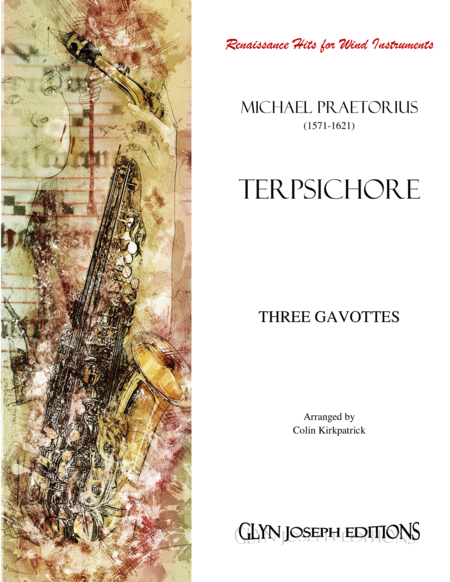Small Ensemble - Level 2 - Digital Download SKU: A0.522158 Composed by Pierre-Francisque Caroubel (1556-1611). Arranged by Colin Kirkpatrick. Renaissance,Standards. Score and parts. 25 pages. Colin Kirkpatrick Publications #3907943. Published by Colin Kirkpatrick Publications (A0.522158). By the time Michael Praetorius published his extensive dance collection entitled Terpsichore (terp-SIH-cory) in 1612, he was one of the most famous musicians in Germany. These Three Gavottes are well-known and lively dances and sure to add some sparkle to any concert event. This piece is arranged for virtually any combination of conventional wind instruments and percussion, with optional keyboard part.In this series, Renaissance Hits for Wind Instruments, some of the most well-known dances from Terpsichore are included. They are all attractive pieces and are sure to be popular at any concerts or end-of-semester events. They are fairly easy to play too. The flexible arrangement makes them playable by all sorts of non-standard ensembles. The keyboard part enables you to use the piece as a solo or duet and trio for mixed instruments. This 4-part arrangement is presented in a single PDF file which includes the Full Score; Part 1 (C, B flat, E flat); Part 2 (C, B flat, E flat); Part 3 (C, F, B flat, E flat), Part 4 (C, B flat, E flat); Keyboard and Percussion. There are separate parts in various transpositions. The optional keyboard part is intended as a guide and when possible the keyboard player should improvise around the part and chords shown. A piano sounds distinctly out of place in this music and a digital or acoustic harpsichord sounds more authentic. Most electronic keyboards have a harpsichord option.The percussion instruments used are similar to those found in elementary school music rooms and usually include a small bass drum or hand-held drum, clave or small headless tambourine. Two players are usually required and the parts can be interpreted quite freely. Dance music is intended to be fun, and we hope that this arrangement brings you just that.
